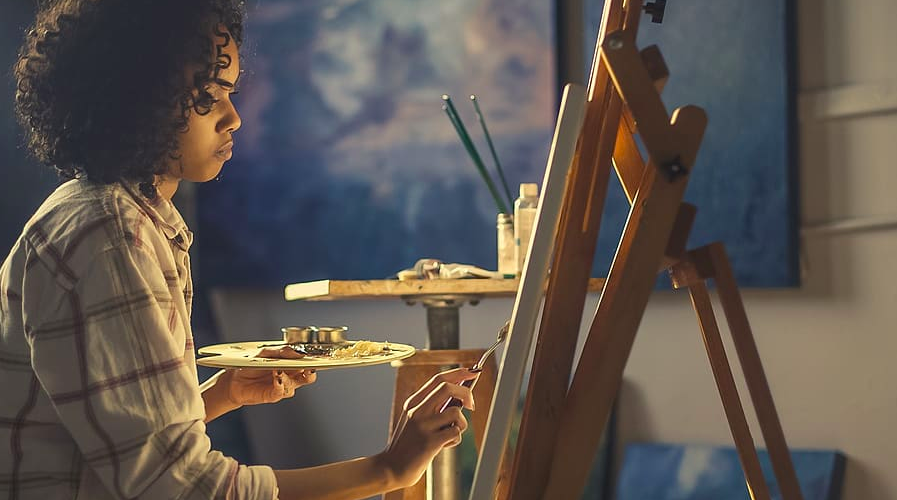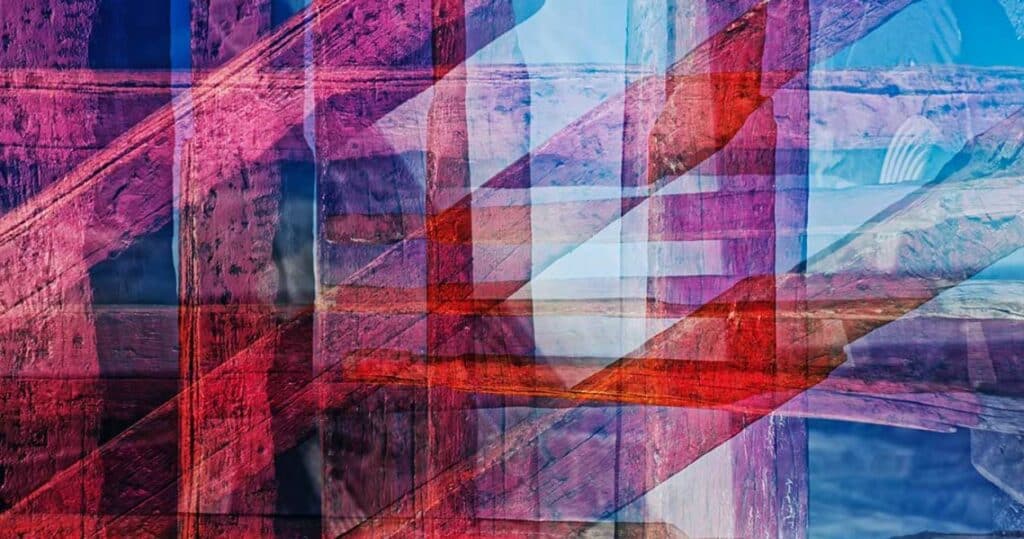In this article we will discuss about 10 Best Art Movements of the 20th Century. There were many artists who made new and interesting work in the 1900s. They made people think differently about art. Some artists used bright colours to show how they felt, like when they were happy or sad. Some people broke things up in strange ways. Fauvism was a group of artists who loved to use lots of colours to show how they felt. Then there was cubism, which made things look like they had been taken apart and then put back together in a strange way.
Expressionism was all about showing how you really feel, like when you’re very happy or very sad. The goal of futurism was to show how fast and cool things were getting. Some artists made even stranger art after a big war. In Dada, everyone was silly and did strange things all the time. It felt like exploring dreams and strange things that didn’t make sense.
Some artists used colours and shapes but not real things to make art. That’s what they called it. They liked putting things together and making cool patterns. Also, there were American artists who made really big paintings that showed a lot of emotion. It was known as Abstract Expressionism. They used lots of colour and big lines to show how they felt inside.
Read more: How to Make Art Prints at Home: 8 easy steps
List of 10 Best Art Movements of the 20th Century
In the olden days, lots of artists were very brave and they changed how art looked. They made different kinds of art that were special and cool. Some made art that looked like squares and shapes all mixed up, while others made art with bright colors and pictures of everyday things. Let’s go on an adventure and learn about the 10 Best Art Movements of the 20th Century!
Cubism (1907-1914)

key Details
- Founded by Pablo Picasso and Georges Braque.
- Synthetic Cubism (later phase) incorporated collage and mixed media.
- Influenced by African tribal art and the advent of photography.
In the years between 1907 and 1914, cubism was a cool way for artists to paint. It began with Pablo Picasso and Georges Braque. They made art that looked like they took pictures apart and glued them back together in a strange way. Picasso’s “Les Demoiselles d’Avignon” and “Guernica” were like puzzles, as were Braque’s “Violin and Candlestick” and “Houses at L’Estaque.” Things looked different in cubism because it used forms like triangles and squares. It helped artists show things in new ways. It was like a new game to play.
Surrealism (1920s-1930s)

key Details
- Led by André Breton.
- Aimed to channel the unconscious mind to unlock creativity.
- Embraced dream-like imagery, automatism, and juxtaposition of unrelated objects.
In the 1920s and 1930s, surrealism was another cool art style. Some of the artists who led it were Salvador Dalí, René Magritte, and André Breton. They made art that looked like crazy thoughts and dreams. Dahle painted clocks that were melting in “The Persistence of Memory,” and Magritte painted a man with an apple on his face in “The Son of Man.” Surrealism let artists make up crazy stories and have fun with their ideas.
Abstract Expressionism (1940s-1950s)

key Details
- Also known as the New York School.
- Stressed individuality and the emotional experience of the artist.
- Often seen as a reaction against rationalism and conformity.
In the 1940s and 1950s, abstract expressionism was a fun style of art in the United States. People who stood out were artists like Willem de Kooning and Jackson Pollock. Best Art Movements of the 20th Century, They used a lot of colour and big, wild brushstrokes in their big works. A Pollock painting called “Number 1A, 1948” looked like a big mess, and a de Kooning painting called “Woman I” was a rainbow of colours. Everyone loved how it looked like they were painting their feelings on big canvases.
Pop Art (1950s-1960s)

key Details
- Celebrated consumer culture and mass media imagery.
- Utilized bold colors, commercial techniques, and iconic symbols.
- Critiqued the distinction between high and low culture.
Popular in the 1950s and 1960s, pop art was a very popular style of art. This type of art was not the same as other important types of art called Abstract Expressionism. Pop artists liked to use things from everyday life, like things people bought, famous people, or things they saw on TV or pageants. They took these everyday things and made beautiful art out of them
Best Art Movements of the 20th Century Andy Warhol was a very well-known pop artist. The things he drew were soup cans and the famous star Marilyn Monroe. In his work, he showed that everyday things and famous people could be important. He also talked about how people care too much about being famous and buy too much stuff.
Minimalism (1960s-1970s)

key Details
- Stripped art down to its essential elements.
- Featured geometric forms, simple lines, and monochromatic palettes.
- Emphasized precision, order, and objectivity.
Then there was minimalism, which was also popular in the 1960s and 1970s. People did it because they didn’t like work that was too hard to understand or stupid. Minimalism was all about making art that was very basic and clean. This type of art used very straight lines, shapes like squares and circles, and colours that weren’t too bright or crazy.
People should be able to understand their art right away when they look at it. One artist, Donald Judd, made sculptures with very exact shapes. He also thought a lot about how things, light, and space were all linked. Another artist, Dan Flavin, made art that was different from anything else people had seen.
Conceptual Art (1960s-1970s)

key Details
- Challenged the notion of art as a physical object.
- Focus on the process of creation and the role of the viewer’s interpretation.
- Artists like Marcel Duchamp and Joseph Kosuth were influential.
Lastly, there was conceptual art, which was also popular in the 1960s and 1970s. It changed the way people thought about art because it was more about ideas than just making things look good. This was very important to artists like Sol LeWitt and Joseph Kosuth. They didn’t just want people to think about how art looked, but also what it could be. In one piece of art by Joseph Kosuth, there was a real chair, a picture of a chair, and even the English word for “chair.” It showed how things like words and pictures could be used together to make sense of something.
Postmodernism (1970s-1990s)

key Details
- Rejected grand narratives and questioned established norms.
- Embraced fragmentation, pastiche, and irony.
- Acknowledged the role of mass media and consumer culture in shaping society.
Folk artists used to want to make things different. Postmodernism was the name of it. Before the 1990s, it began in the 1970s and went on for a long time. It made them feel better to think that everyone can have their own truth instead of just one big truth. Best Art Movements of the 20th Century during this time, artists like Cindy Sherman and Jean-Michel Basquiat were huge stars.
People thought about who they are and what’s important to them when they looked at their art. It’s a way for Cindy Sherman to show that everyone has more than one side to them than just one face.
Feminist Art (1970s-present)

Key Details
- Emerged as a response to the male-dominated art world.
- Explored themes of gender, sexuality, and identity.
- Critiqued traditional depictions of women in art and society.
Feminist art is another thing. It’s like a girl superhero! Girls weren’t always treated well in the 1970s. While Judy Chicago and the Guerrilla Girls made art to say “Hey, girls are awesome too!” Judy Chicago made this amazing piece of art for the dinner table that honours great women from history. She was telling them, “Girls rock!”
Graffiti Art (1970s-present)

key Details
- Initially associated with urban street culture and rebellion.
- Utilizes spray paint and other unconventional materials.
- Can be viewed as a form of social commentary or personal expression.
Have you ever seen city walls with bright pictures on them? That is known as Graffiti Art! It’s like a big museum outside. Spray paint is used by artists like Banksy and Keith Haring to make these beautiful paintings. Sometimes Banksy’s art is about important things, like love and truth. His art was all about showing that no matter who we are, we’re all the same.
Digital Art (1990s-present)

key Details
- Challenges traditional notions of materiality and authenticity.
- Explores the intersection of art, technology, and culture.
- Artists like Nam June Paik and Laurie Anderson pioneered digital art practices.
Think about drawing on a computer screen instead of paper. That is computer art! It looks like magic on the screen. Some of the first artists to use computers to make art were Cory Arcangel and Nam June Paik. They look like a garden of TVs, and Nam June Paik made them. It was like going to a place where science and nature danced together. That’s cool, right?
read more: 8 Famous Rivalries Artistic: all time you must know about
Verdict
We can see how creative people were back then when we look at all of these different kinds of art. It’s like looking at a big, bright puzzle that tells us about the past. That’s pretty cool, right? There are a lot of different ways that art can make us feel. Let’s share our love of art if you do too! It’s fun to make art.
FAQs
What does it mean for art to be abstract?
Abstract art is a type of art that doesn’t try to show things or scenes from the real world. Instead, it uses color, shape, line, and form to make people feel something or tell a story. Each viewer will likely interpret an abstract artist’s work differently. This lets people interact with the art more objectively and personally.
Who is thought to have started modern art?
People often say that Pablo Picasso is the father of modern art. His groundbreaking work in different styles, such as Cubism and Surrealism, significantly affected the growth of contemporary art at the beginning of the 20th century. Picasso was one of the most influential and well-known artists of the modern era because he took a new approach to art and made much of it.





